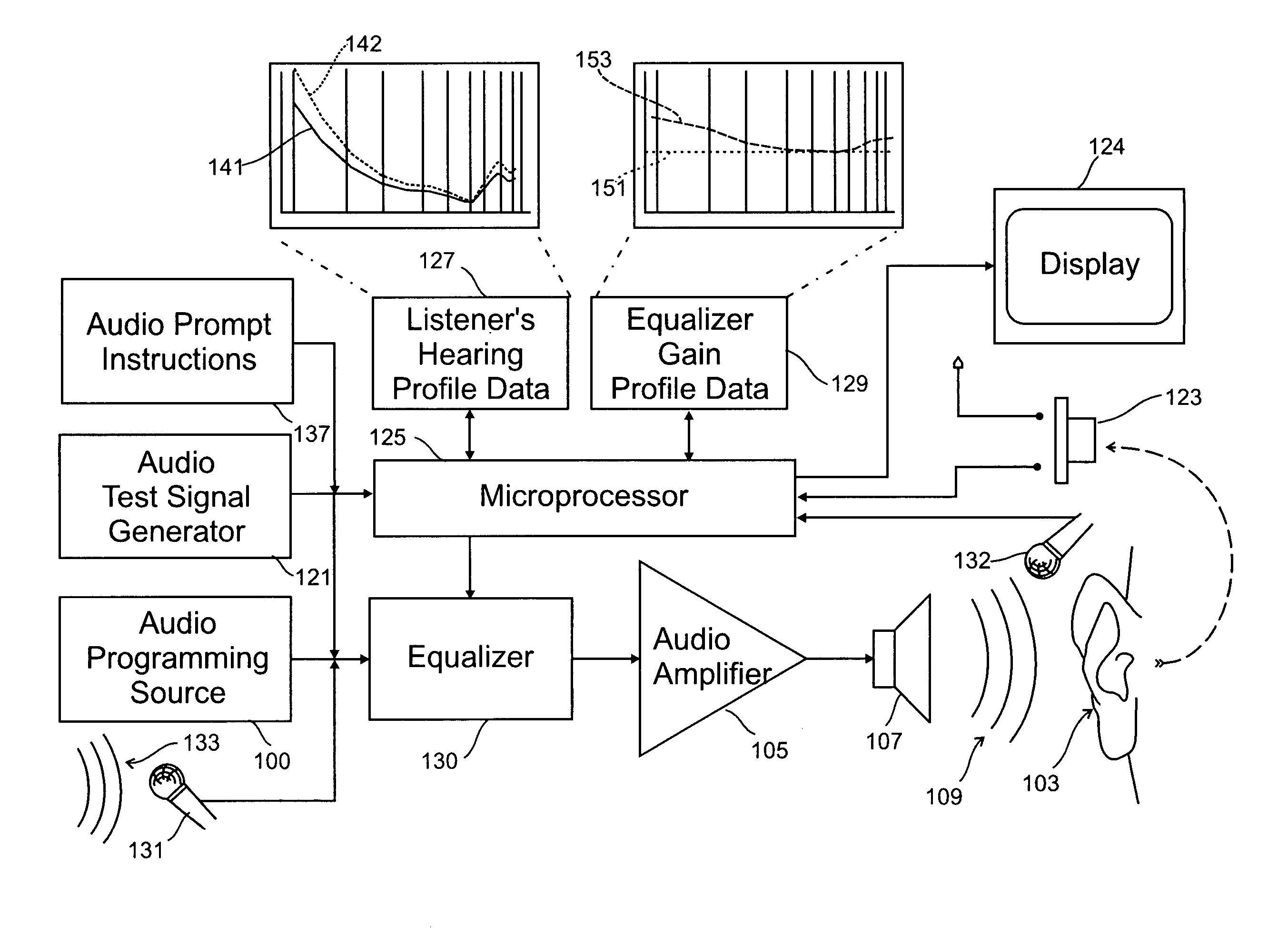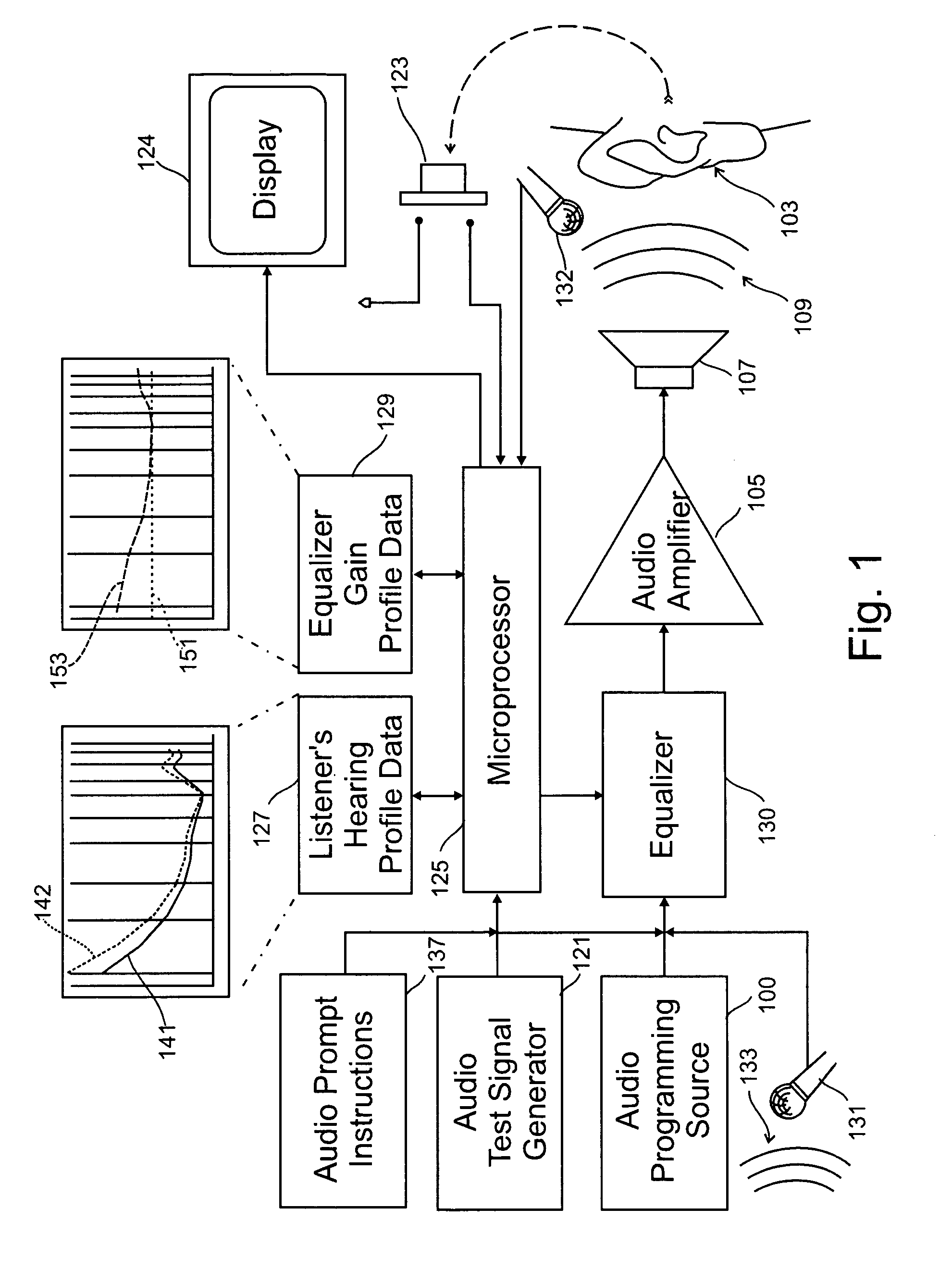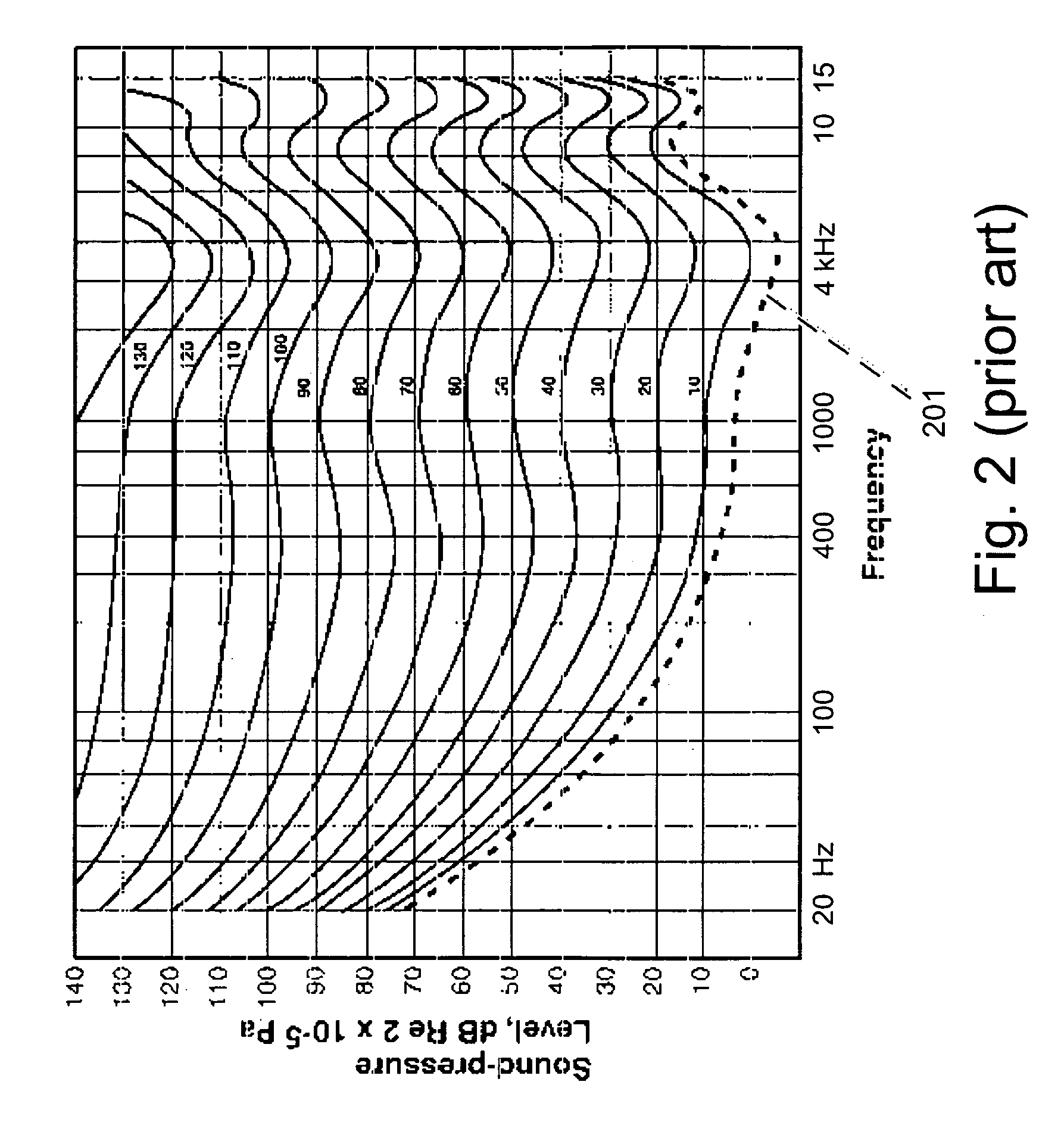Listener specific audio reproduction system
a listening and listening technology, applied in the field of listening system specific audio reproduction systems, can solve the problems of affecting the hearing of different listeners, automatic calibration systems that do not compensate for differences in hearing abilities of different listeners, and more degradation of the quality of reproduced sound reproduction than the system components used, so as to improve the sound quality
- Summary
- Abstract
- Description
- Claims
- Application Information
AI Technical Summary
Benefits of technology
Problems solved by technology
Method used
Image
Examples
Embodiment Construction
[0020]A schematic diagram of an illustrative implementation of the invention is shown in FIG. 1. Sound from an electronic audio programming signal source 100 is delivered to a human ear 103 by a sound reproduction system that includes an automatic equalization scheme to compensate for:[0021](1) defects in the reproduction capabilities of the programming signal source 100 and of an electronic audio amplifier depicted at 105,[0022](2) distortion introduced by an electrical-to-acoustic transducer illustrated by the loudspeaker seen at 107,[0023](3) distortion introduced by room acoustics or other sound transmission media which transmit the sound waves 109 to the ear 103, and[0024](4) defects in the listener's hearing ability.
[0025]The mechanism for correcting for distortions caused by the reproduction components, the acoustic transmission medium and the listener's hearing employs a test signal generator 121 for introducing audio test signals into the system, a mechanism illustrated by ...
PUM
 Login to View More
Login to View More Abstract
Description
Claims
Application Information
 Login to View More
Login to View More - R&D
- Intellectual Property
- Life Sciences
- Materials
- Tech Scout
- Unparalleled Data Quality
- Higher Quality Content
- 60% Fewer Hallucinations
Browse by: Latest US Patents, China's latest patents, Technical Efficacy Thesaurus, Application Domain, Technology Topic, Popular Technical Reports.
© 2025 PatSnap. All rights reserved.Legal|Privacy policy|Modern Slavery Act Transparency Statement|Sitemap|About US| Contact US: help@patsnap.com



